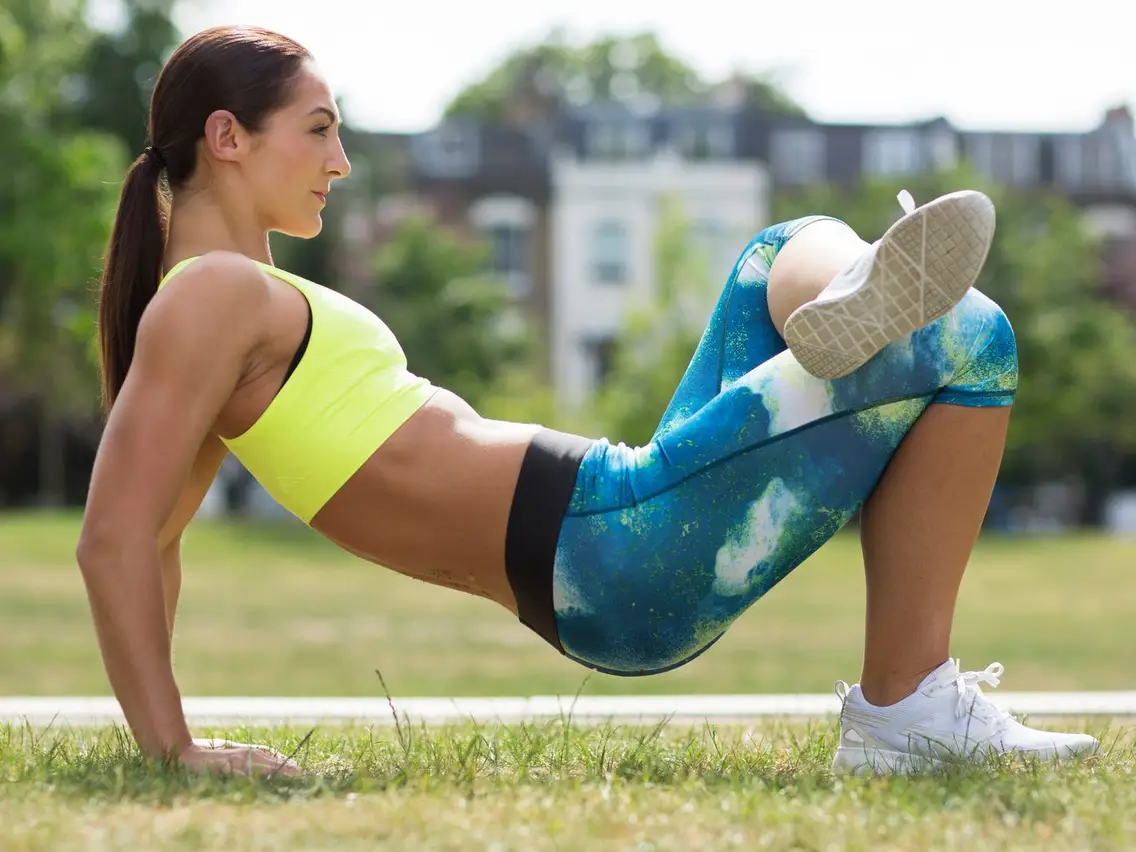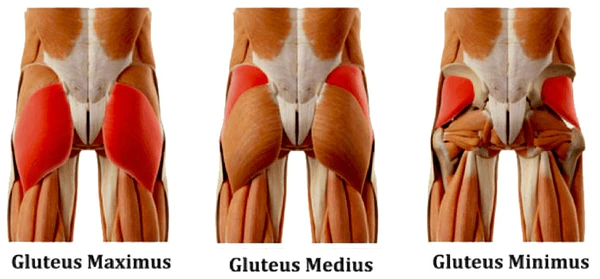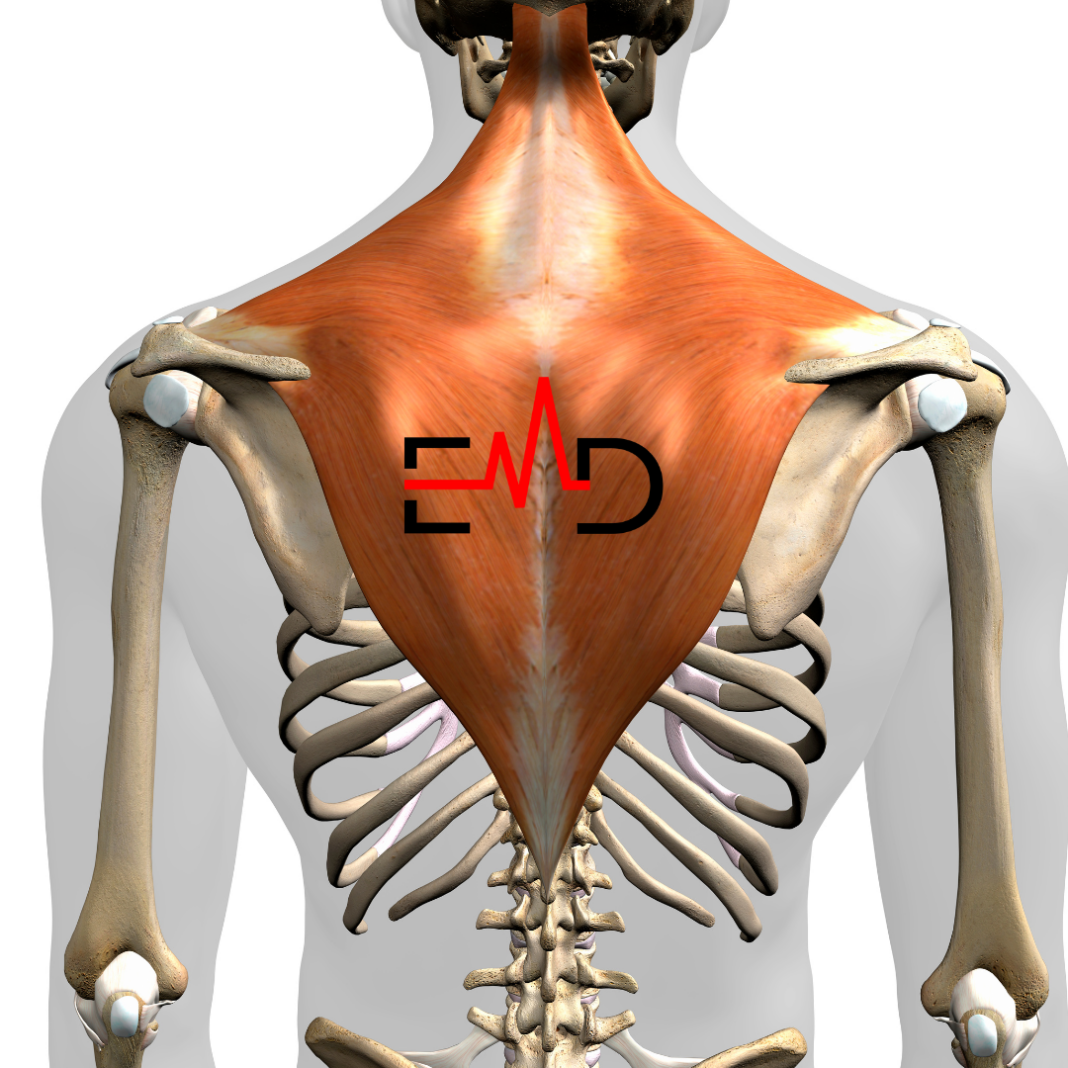Exercise Daily – The gluteus muscles are a group of three muscles that make up the buttocks: the gluteus maximus, gluteus medius, and gluteus minimus. The glutes are the largest and most powerful muscles in the human body. However, many people have weak glutes, which can lead to a number of problems. The top three causes of my glute not growing or weakness is poor posture, lack of exercise, and tightness in the hip flexors. The gluteus maximus is the largest of the three muscles and is responsible for the majority of the shape and size of the buttocks. The other two muscles, the glute medius and minimus, are located on the sides of the hip and help to stabilize the hip joint.
Weakness in any of these three muscles can lead to problems with movement and balance. In this article, we will discuss why your glutes might not be growing, as well as the top three causes of glute weakness. We will also provide some tips on how to overcome glute weakness.

Why are My Glutes not growing?
There are a few reasons why your glutes might not be growing as you want them to. First, let’s look at the muscle itself. The gluteus maximus is the largest muscle in the body, so it’s not surprising that it can be difficult to build. Second, the gluteus maximus is a slow-twitch muscle, meaning that it’s designed for endurance rather than explosive power. This means that it takes longer to fatigue and recover than other muscles in the body.
Third, the gluteus maximus is a stabilizing muscle, meaning that it works to keep your pelvis and spine in alignment. This means that when you’re doing exercises like squats and deadlifts, your glutes are working hard to keep you from tipping over. This can make it difficult to isolate the muscle and really work it hard.
There are a few common reasons why your glutes might not be growing. Here are three of the most common causes:
1. Lack of Training
Glute growth is largely determined by how often you train them. If you haven’t been working them regularly, your glutes may not grow as fast as they would if you were doing more exercises targeting that area.
2. Genetics
Your genetic makeup will play a role in how large and strong your glutes are. Some people have naturally larger glutes than others, regardless of how much they train or scenery hate their diet.
3. Injury
If you’ve ever suffered an injury to your glutes, they may not want to grow back as quickly as normal due to the inflammation and pain that comes with the injury. Rehabilitation is key in helping these muscles recover and get back to their pre-injury size and strength levels.
1 Glute Development and Exercise
The glutes are one of the most important muscles in the body and play an important role in every movement you make. If your glutes aren’t working right, it can lead to a bunch of problems, including poor posture, joint pain, and difficulty getting up from a seated position.
There are several factors that can impact your glute growth, so it’s important to figure out what’s causing your weakness. Here are the top five reasons your glutes might not be growing:
1. Weak Core Strength:
Without strong abs and obliques, your glutes won’t have anything to work with. Make sure to do regular core exercises to strengthen these areas. The intensive glute workout and other superior glute exercises increase the size of the glute.
2. Poor Glute Activation:
If you don’t activate your glutes properly during workouts, they won’t get the attention they need to grow. Focus on contracting them strongly during each exercise while keeping the rest of your body stationary.
3. Lack Of Glute Exercise:
Regularly incorporating glute exercises into your routine will help ensure they’re getting the stimulation they need to grow. Aim for at least two sets per day of moderate-intensity resistance and weight training (with plenty of reps).
4. Inadequate Nutrition:
Not enough calories can lead to lower muscle density and decreased protein synthesis – both key factors in muscle growth. Make sure you’re eating enough protein and healthy fats to support muscle development as well as energy production.

2 Genetics
There are a few reasons why your glutes might not be growing. Genetics can play a role in how much muscle you build, and there are also various other factors that can affect your glute development. Here are the top five causes of Glute Weakness:
1. Lack of Muscle Mass:
If you haven’t been working out consistently, your muscles will not grow as quickly or as large as they could. Your glutes may not develop as well if this is the case. You’ll need to start building muscle mass if you want to see results with your glutes.
2. Inactivity:
If you don’t engage in any type of physical activity, your body won’t create any new muscle tissue. This means that your glutes won’t grow either – even if you’re working out regularly!
3. Genetics:
Some people simply have less muscle tissue in their buttocks region than others. This is due to genetics and cannot be changed, so it’s important to keep in mind if this is something that concerns you.
4. Size Matters:
The bigger your butt gets, the more muscle it will contain and the better chance you have of getting strong glute muscles. It’s important to focus on increasing overall body size rather than just having big butt muscles – both will give you better results!

3 Gluteal Fatigue
1. Gluteal Fatigue
One of the top causes of glute weakness is known as gluteal fatigue. This condition occurs when the glutes become chronically fatigued and can no longer produce the same level of muscle activation as they once did. This can be caused by a variety of factors, including poor posture, a sedentary lifestyle, heavy lifting, and inadequate warm-up exercises.
2. Tight Hamstrings
The second most common cause of glute weakness is tight hamstring muscles. These muscles attach along the back of the thighbone (femur) and help carry weight when you stand up from a seated or crouching position. If these muscles are excessively tight, they can reduce blood flow to the glutes and other leg muscles, leading to decreased muscle strength and stamina. Treatment for tight hamstring muscles typically involves stretching and massage therapy.
3. Irregular Glute Activity
Another common cause of glute weakness is irregular glute activity. This means that your glutes aren’t working properly due to an untrained or weak muscle foundation. Your body will naturally rely more on other muscles to do the job instead, causing them to become weaker in relation to your abs and lower-body muscles. To combat this issue, ensure that you engage in regular exercises that targets your butt – such as Pilates or yoga – and focus on isolating and strengthening your glutes with proper exercises such as squats, glute bridges, and deadlifts.

Weak Muscles All Over Your Body
There are a few key muscles in the glute region that can be responsible for weak glutes. These muscles include the gluteus maximus, gluteus medius, and gluteus minimus. Weakness in these muscles can lead to a number of issues, including poor balance, difficulty with hip extension and abduction (moving the leg away from the midline), and decreased range of motion.
Here are some tips to help you identify which muscle is causing your Glute weakness:
1 Lie on your back on the floor with your feet flat on the ground. Place hands behind your head with palms down. This will help isolate your core muscles.
2 Raise your torso off the ground until both legs are in line with each other, then lower back down. If you feel pain or discomfort at this point, it likely indicates that one of your glutes is weaker than the other.
3 To test for strength in each of your glutes, perform squats using weights that you can comfortably lift off the ground (up to 25 pounds). You should feel a deep contraction in both legs when squatting like this. If only one side of your body feels strong when squatting like this, it may indicate that that muscle is weaker than the other side.
Anatomy of the Gluteus Maximus
The gluteus maximus is the largest and most powerful of the three glute muscles. It covers the posterior wall of the hip bone and helps to extend the hip. This muscle also assists with abduction, rotation, and lateral flexion of the thigh.
The major function of the gluteus maximus is to provide support for body weight when standing or walking. In addition, this muscle helps to maintain an upright posture by providing stability during movement.
The gluteus maximus can be weakened due to a variety of reasons including:
Weak core strength:
The core muscles surrounding the pelvis are key in supporting your spine and helping you maintain good posture. If these muscles are weak, it can lead to poor alignment and stability in the hips, leading to weak glutes.
Poor mobility:
Although not always a direct cause, poor mobility can contribute to weakness in the glutes. Tightness in the hip flexors (such as those around the groin) can limit range of motion in these muscles, which will then impact Glute max strength.
Previous injury:
If you’ve had an injury that has affected your hip or pelvis – such as an ACL tear – your glutes may take longer to recover than usual.
Age:
As we age, our muscle tissue tends to shrink and become less dense, which can reduce strength and size in certain areas of our body including our Glutes.
Gluteal Muscles Function
The gluteal muscles are responsible for putting your body into a good hip position, as well as providing support when you’re standing or sitting. When these muscles aren’t working properly, it can lead to hip pain, stiffness and even lower back pain. Here are the five most common causes of glute weakness:
1. Weak Glutes due to Genetics
If you have a family history of weak glutes, it’s more likely that you’ll also have weak glutes. Studies show that up to 80% of individuals with weak glutes have a genetic component to their weakness.
2. Gluteal Muscle Loss Due to Aging
As we age, our muscle mass naturally decreases. This can cause the gluteal muscles to become less powerful and able to do their job properly. In addition, older women often experience a decrease in muscle strength in all areas of the body, including the glutes.
3. Gluteal Muscle Imbalance
When one muscle is stronger than another, this can lead to imbalances throughout your body. In the case of the glutes, this imbalance can cause them to become weaker and less effective at performing their task.
4. Lack of Exercise
Exercising regularly not only helps build muscle mass but also strengthens specific areas of the body, including your glutes.
Gluteal Muscle Training
If you’re feeling frustrated with your lack of progress in building muscle mass in your glutes, there are a few things to keep in mind. First and foremost, don’t forget that the gluteus maximus is one of the largest and most complicated muscles in the body. It takes time and consistent training to see results.
Next, it’s important to make sure that you’re stretching and mobilizing your glutes firing regularly. Stretching not only helps increase mobility and range of motion, but it also helps activate the gluteal muscle fibres properly. And finally, don’t neglect weightlifting exercises that involve the Gluteus maximus. Including these types of workouts in your routine will help make significant muscle gains in this area. Check the Surprising Benefits of Doing Squats every day.
How to Strengthen Your Glutes
There are a few things you can do to strengthen your glutes. Start with some basic exercises or glute workouts that work all the major muscles in your butt. Try these:
- 1) squats
- 2) lunges
- 3) deadlifts
- 4) hip raises
- 5) single-leg bridge
Conclusion
If you are finding that your glutes are not growing as fast as they should, it might be due to one of the following causes: Glute weakness – This is caused by a lack of muscle mass in the glutes. It can be due to genetics or age, but there are ways to help overcome this problem. What you eat – Your diet plays a big role in how your body produces hormones and builds muscle tissue. Make sure that you’re eating foods that will help build your glutes. Examples include high-quality protein, healthy fats, and fibrous vegetables.
FAQs – My Glutes not growing
Why is it taking so long for my glutes to grow?
How long it takes to develop your glute can depend on various factors such as genetics and diet. However, despite your best efforts to maintain a healthy lifestyle you can begin to notice changes within a week with a proper diet.
What triggers glute growth?
Squatting deadlifts and lunges are definitely hitting the glutes, but they target many other muscles such as hips, shoulders, and hamstrings. When trying to create great gluteal muscles you must perform exercises that activate most muscular tissue in all three gluteal muscle groups. These complex muscle group helps to increase glute size. So, keep the exercise routine.
Why am I not seeing results in my glutes?
Prioritize exercise over weight loss. In addition, exercising can actually lower the body’s capacity to increase glute strength and increase muscle mass. The best way to get the best possible results is to train the glutes in a variety of weight-based workouts including hip thrusts, kas glute bridge, and deadlifts 3-5 times per week.
How can I stimulate my glute growth?
Back squats. Back squatting is an essential component in gaining the upper body. Getting your glutes stronger should be the goal of any low-body exercise program. They can help strengthen the hammy core quadriceps while also increasing your strength.



